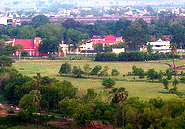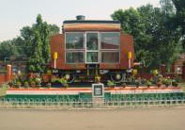Welcome to Jamalpur the world’s most beautiful place! Munger, Bihar
Welcome to Jamalpur ||Munger, BiharArchive for Business
Few Areas Where Nokia’s New Windows Phone Can Stand Out
Now Samsung has set the scene, it’s time for Nokia to step up to the plate and take a swing with their new Windows Phone 8 powered smartphones. Leaks aside (and if you really want to find them, there are plenty other websites out there with spy shots, images, and rumoured specs, Bing is your friend), the upcoming announcement in New York on September 5th is going to be a pivotal one for Nokia, for the Windows Phone ecosystem, and the world of smartphones as a whole.
Outside of the specifications of the device and the inclusion of Windows Phone 8 as the operating system, what will I be watching out for during the launch? Read the rest of this entry »
Investors Are Realizing That Nokia Is Here To Stay
In the past few months, I’ve mentioned in a number of articles that a possible bankruptcy is already priced in for Nokia (NOK) as the company’s market value is far below the value of the company’s patent portfolio alone. Any positive news or hint regarding Nokia’s survivability would be bullish for the stock.
Source: http://seekingalpha.com/article/759301-investors-are-realizing-that-nokia-is-here-to-stay
Improve Railways’ coal delivery for better returns
A mechanical engineer from the Indian Railway Institute of Mechanical & Electrical Engineering, Jamalpur (Bihar), Mr Kumar joined the Indian Railways in 1976 and took over as General Manager of the SECR November.
South Eastern Railway’s (SER) erstwhile Bilaspur Division, then the country’s largest freight-loading railway division, became the headquarters of a new zonal railway, South East Central Railway (SECR), on April 1, 2003, following trifurcation of the SER.
Today, the SECR is the single largest freight-loading (read, coal loading) zone of the Indian Railways.
In 2011-12, SECR handled 150.7 million tonnes (mt) of traffic, including 112 mt of coal.
Targets
The targets for the current year have been set at 158 mt and 118 mt respectively.
The targets, though achievable, are not without challenges, Mr Arunendra Kumar, General Manager of SECR, tells Business Line, drawing attention to a 0.4 mt drop in coal throughput in the first quarter vis-à-vis the same period of last year.
A mechanical engineer from the Indian Railway Institute of Mechanical & Electrical Engineering, Jamalpur (Bihar), Mr Kumar joined the Indian Railways in 1976 and took over as General Manager of the SECR November.
The SECR has embarked on a multi-pronged strategy to boost loading.
The strategy, according to Mr Kumar, presupposes having new private sidings to load more raw as well as washed coal, helping public sector coal companies tackle railway problems, launching new projects, speeding up implementation of projects on hand and upgrading the delivery system.
No rake shortage
Mr Kumar makes it clear that his railway does not suffer from a shortage of rakes.
“As many as 90 rakes are available every day for coal loading, with at least 25 per cent of them idling,” he says, asking, “Where is coal?” As he points out, out of the nine sidings of Mahanadi Coalfields in Ib Valley served by the SECR, only one has two-and-a-half days’ stock while others are living virtually hand-to-mouth.
In April, there was no coal for loading due to various reasons, including the dispute over payments between the washeries and their customers.
The SECR, though accounting for 72 per cent of total coal loading in areas served by it, is not connected to many pitheads directly and the rake loading in respect of these mines has to be supported by road-bridging, which is not the responsibility of the railways.
Overall, loading by coal companies has been unsatisfactory.
The coal companies hardly bother to properly maintain their own rail networks. They outsource the job with predictable consequences.
Derailments
Derailment is a regular feature and one derailment cripples movement for several hours. Last year, about 85 derailments hit the SECR’s coal movement.
“SECR, therefore, is assisting the coal companies concerned to upgrade their railway systems.
“A beginning has been made with the renovation of a 3-km-long railway line at Odisha’s Brojorajnagar under Mahanadi Coalfields Ltd at a cost of Rs 5.6 crore and a similar exercise is likely soon at Korba (Chhattisgarh) under South East Central Coalfields Ltd.
“We want coal companies to deploy more pay-loaders as it is possible to complete loading a rake of 59 wagons in two to two-and-a-half hours as against four to five hours at present by deploying five pay-loaders and thus achieving a 50 per cent jump in efficiency.
“Assuming such an improvement is difficult to sustain throughout the year, partial success yielding at least a 25 per cent improvement too will mean a lot. But then, deployment of pay-loaders is a contractual matter between coal companies and equipment suppliers.”
New projects
As for new projects, the Chhattisgarh Government has identified three railway corridors mainly to facilitate coal loading (with limited passenger services) and is serious about their early implementation.
Two of these projects, namely, the 85-km long Eastern Corridor between Bhupdeopur and Khargoda and the 122-km-long East West Corridor between Korba and Pendra Road, are receiving top priority with several rounds of discussion already held between the Chairman of the Railway Board (Indian Railways will hold 26 per cent equity stake in the special purpose vehicle to be formed to implement the projects), the Union Coal Secretary, the Chairman of Coal India Ltd and the Chief Minister, Dr Raman Singh.
land acquisition
However, land acquisition remains a big issue and, precisely for this reason, the extent of equity participation by the State Government, the coal company (most probably South East Central Coalfields Ltd, a subsidiary of Coal India) and even private firms, the prospective beneficiaries of the projects, are yet to be finalised.
The State Government’s participation will be by way of making land available.
The two major projects in hand include construction of a third line over a 485-km stretch between Jharsuguda and Gondia and a second line, over 42-km-long, on the 150-km Bilaspur-Katni line, also known as the CIC line.
Resources
There has been a delay in implementing the projects. Resource is a major constraint but there are other problems.
For example, the work on the CIC line was held up for more than two years due to the delay in getting a forest clearance.
“Also, it is not easy to undertake new construction alongside the existing lines on which normal movement has to be maintained with the number of trains increasing every year,” he says.
The delivery system improvement is sought to be achieved in several ways, namely, easing the gradients in certain sections (with five such sections having been identified and work on a pilot project near Nagpur already started), breaking long sections into two by signaling improvement (known as IBH, or intermediate block hut), and introducing more long-haul trains, that is, clubbing two freight trains into one that comprises 118 wagons.
Long-haul trains
Right now, the SECR operates 10 such long-haul trains, mostly empties, on the Bhilai-Korba route. The plan is to club three rakes into one for operation on the same route.
“We have problems, the most important being the capacity constraint, but we must find ways to overcome them and, if necessary, relocate resources to projects yielding better returns faster,” Mr Kumar observes.
Source: http://www.thehindubusinessline.com/industry-and-economy/logistics/article3669923.ece
All India Consumer Price Index Numbers for Industrial Workers on base 2001=100 for the month of March, 2009
18:44 IST
1. All India Consumer Price Index Number for Industrial Workers(CPI-IW) on base 2001=100 for the month of March, 2009 remained stationery at 148 (one hundred and fortyeight).
2. During March, 2009, the index recorded maximum increase of 4 points each in Warrangal and Munger-Jamalpur centres, 3 points in Bhilwara centre, 2 points in 7 centres and 1 point in 25 centres. The index recorded a decrease of 2 points each in Chennai, Jalpaiguri and Earnakulam centres, 1 point in 6 centres, while in the remaining 34 centres the index remained stationary.
3. The maximum increase of 4 points in Warrangal centre is mainly due to increase in the price of Rice, Milk (Buffalo), Vegetable & Fruit items etc., in Monger-Jamalpur centre this increase is due to Goat Meat, Fish Fresh, Milk (Buffalo), Vegetable & Fruit items, Tea (Readymade), Washing Soap etc..The increase of 3 points in Bhilwara centre is due to Wheate, Onion, Vegetable & Fruit items, Sugar etc. The devrease of 2 points in Earnakulam centre is on account of decease in the prices of Rice, Coconut Oil, Fish Fresh, Bus Fare etc., in Jalpaiguri centre due to Wheate Atta, Masur Dal, Mustard Oil etc. and in Chennai centre it is due to Rice, Poultry (Chicken), Onion, Tamarind, Flowers/Flower Garlands etc.
4. The Indices in respect of the six main centres are as follows:
______________________________________________________
1. Ahmedabad 143 4. Delhi 141
2. Bangalore 160 5. Kolkata 147
3. Chennai 142 6. Mumbai 153
____________________________________________________
5. The point to point rate of inflation for the month of March, 2009 is 8.03 % as compared to 9.63% in February, 2009.
***********
VBA/
















